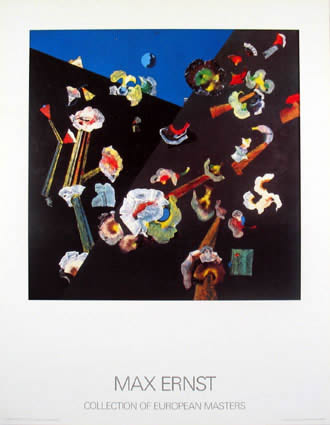
Learn foreign languages while watching your favorite YouTube videos!
The Language learning app is a handy set of tools that will help you improve your language skills by accessing subtitles, a built-in dictionary, and saving words and phrases you want to learn to revise.
Learning foreign languages will be an interesting and exciting experience for you!
Born: 1891
Died: 1976
Gender: Male
Nationality: German


“Ernst came to describe the additions he made to his collages as changing them into images which ‘transformed into revealing dreams my most secret desires’.” Ian Turpin from Max Ernst (Phaidon, 1979)
Max Ernst was born in Cologne to a deeply religious family. In 1911 he attended Bonn University where he studied philosophy and psychology. It was while at university that he met August Macke and a number of the Blue Rider group. In 1920 alongside Hans Arp and the social activist Alfred Grunwald, he set up the Cologne Dada group. Although short-lived, it was a crucial time in his development as an artist. It was at an exhibition entitled ‘Beyond Painting’ at the Au Sans Pareil gallery that he achieved his first notable success with his collages.
His series of peinture-poesie (picture-poems) set him apart from his contemporaries as he experimented with various word-image combinations. Then in 1925 he developed ‘frottage’ in which he positioned paper over wooden floorboards and rubbed a pencil over the top. Using a mixture of textures he produced works of a dreamlike quality with mysterious figures and features. Moving on from this and with the help of Joan Miro he pioneered ‘grattage’ in which he applied the frottage technique to oil painting. In 1934 he worked in sculpture for the first time, then, After a period with the Surrealists he left them in 1938 due to Breton’s desire to ostracise Ernst’s friend Paul Eluard. Following the outbreak of the Second World War Ernst was interned as an enemy alien but eventually manages to escape Paris and, after a stop in Spain, arrived in New York in 1941. He remained in the United States on and off until 1952. During this time he collaborated with Breton and Duchamp on the periodical VVV. This was a focal point for the European Surrealists who had escaped to America because of the war. Returning to France in 1953 he set up a studio in Paris and eventually took up French citizenship.
Ernst favoured subject matter derived from his childhood fantasies. His work embraces his unconscious, tackling both his desires and demons. He had no formal training yet his talent was clear from an early age. A work such as ‘Men Shall Know Nothing of This’ (1923) can be considered a Surrealist masterpiece while ‘Blind Swimmer: the Effect of Contact’ (1934) is a work of an artist completely in control of his technique. He did not succeed financially until 1954 when he won the Venice Biennale. After this, based in Paris with his second wife Dorothea Tanning(he was married briefly to Peggy Guggenheim), his work finally received the recognition it deserved.